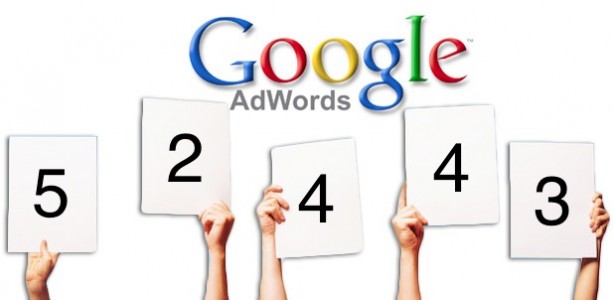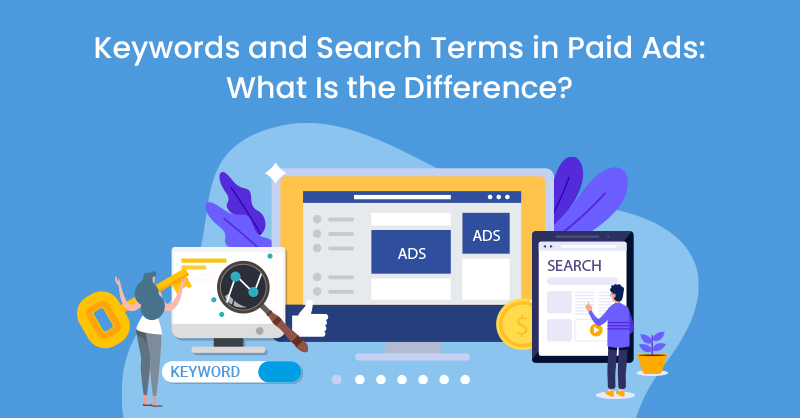A good ad experience is good for everybody involved: users, advertisers, and Google. AdWords is built on this idea and a key aspect of creating a good experience is measuring the quality of ads.
Good measurement helps Google ensure that the most useful ads are shown in the best positions on the search results page. This allows users to see relevant ads while advertisers get clicks from more qualified users, enjoy a lower cost per click, and gain the ability to surface more information through ad extensions. Ad quality is thus critically important to advertisers.
3 Simple Steps to Ensure Higher Quality Scores
5 Things You Need to Know About Google AdWords' Quality Score
Despite its importance, there are many misconceptions about the topic, specifically about how the metric Quality Score is calculated and reported in advertisers' accounts. In order to clear up these misconceptions, Google released a guide to explain how advertisers should react to and use these metrics. Here are some of the key takeaways!
How Quality Score is Calculated
AdWords is set up to identify and reward quality ads so that high-quality ads can not only provide a higher Ad Rank but also benefits like a lower cost-per-click, better ad positions, and access to ad extensions and other ad formats.
The most important thing to realize about Quality Score is that the metric listed in your account is not an exact representation of your real-time ad quality calculations., it is a more general representation of your ads' overall performance in auctions. In fact, the quality of your ads are calculated for each auction they enter. The Quality Score number of 1-10 is connected directly to each auction and during a real-time auction there are also several other factors considered which are not reflected in your Quality Score metric. These factors include:
- The user's exact query
- The user's device
- The user's location, and
- The time of day.
Quality Score for each auction is calculated based on three components, each of which has a status of above average, average, and below average. These components are expected clickthrough rate, ad relevance, and the experience provided by your landing page. Whenever a user makes a search, all three of these components are recalculated in order to determine Ad Rank.
How to Use Quality Score (+ Other Metrics) to Diagnose Keyword Quality
Another good way to think about your Quality Score metric is like warning lights in a car: It is something that alerts you to potential problems but should not be the focus of your account optimizations. If you are doing the right things, your Quality Score should align with the performance of your account and short-term solutions or tricks meant to force this number up are not the way to go.
Instead, focus on long-term performance goals and improve the experience of your customers in order to achieve them. Once you have done this, check your Quality Score again to see how well you are doing: Chances are you will see an improvement.
For more specific information about the performance of your account there are three other metrics which are shown in your account that can help you look for specific things to improve. These metrics are:
- Click-through rate
- Conversion rate
- Site engagement
Rather than focusing on the Quality Score metric itself, a better indicator of your account's health is to pay attention to the three components above the overall 1-10 score. The Quality Score metric is not plugged directly into the Ad Rank formula at auction time. Instead, it is these three components - ad relevance, expected CTR, and landing page experience - as well as a variety of other factors, that are used to compute Ad Rank. Factors can include geographic signals, the differing quality of multiple ads in an ad group, and non-exact query matches.
How to Improve Your Account by Focusing on Quality Score Components
When looking for ways to improve your account, it is important to set priorities based not only on the score of each component but also based on how quickly and easily you are able to make improvements. For example, if your landing page has a below average score but you do not have direct control over your website or changes take a long time to implement, focusing first on things that can be improved quickly will help raise your overall Quality Score.
It is common for people to focus on click-through-rate above other factors because getting users to click is their ultimate goal but ad relevance and landing page experience are also important to the overall success of your campaigns. Improving each component requires a different approach.
How to Improve: Ad Relevance
- Match the language of your ad text more carefully to search queries
- Move keywords into smaller ad groups to target more specific groups.
- Look for ad groups with below-average keywords. Separate them into a different ad group with more focused ads.
- Speak more directly to the intent in users' queries.
- Add negative keywords to prevent ads showing up on irrelevant queries.
How to Improve: Expected Click-Through-Rate
- Introduce more compelling ad text with creativity that inspires action.
- Highlight the unique benefits of your products or services.
- Experiment with different calls to action.
- Use more specific ad text.
- Include more details for a more compelling ad.
- Tailor your creatives to user's search for a strong relationship between keywords and ad text.
- Create urgency to act now by highlighting the benefits of your business.
How to Improve: Landing Page Experience
- Send traffic to more specific landings pages targeted to user's query.
- Use ads to set up landing pages for success by telling users what's coming and speaking to the users most likely to become customers.
- Make sure your landing page follows through on the ad's offer and call to action.
- Use your conversion rates as proxy for good landing page experience. Measure it and work to improve it.
- Rethink the mobile experience you are providing. Ease of navigation is always important but it is especially critical on mobile websites.
When optimizing it is important to remember that the word-for-word phrase from the users' queries doesn't need to be on the landing page. It is not good practice to stuff the landing page with keywords in order to improve relevance. Instead, focus on creating a great user experience that delivers what they are looking for.
6 Important Facts About Quality Score
- The User's Device Does Matter
The device used to make a search is taken into account when ad quality is calculated. In order to ensure your ad gets the best possible position, be sure to optimize for mobile users.
- Relevance to the User's Intentions Does Matter
The relevance of your ad is the heart of ad quality. Your ad and website should help users gather relevant information, complete a sale or other tasks, and navigate with ease. Your focus should be on delivering relevant ads that answer the targeted queries.
- Performance on Related Keywords Does Matter for New Keywords
When introducing new keywords, ad quality calculations will start with information about related ads and landing pages in your account rather than starting from scratch. Before targeting new keywords, ensure that related keywords and landing pages are in good shape.
- The Structure of Your Account Does Not Matter
The internal structure of your account does not affect customer experience and, therefore, does not affect your Quality Score either. You may set up your account however you like in order to manage it best without worrying about hurting your ad rank.
- Running Ads in Other Networks Does Not Matter
Targeting Google Display Network or search partners within your AdWords account will not affect the quality score of your ads on Google.com.
- The Ad's Placement on the Page Does Not Matter
Having a high position on a page is great but it will not affect your expected click-through-rate because this metric is normalized for the position in which your ad appears on the page. It will also normalize for other factors like ad extensions and other ad formats.








on
Hello Emily,
Thanks for this great article about quality score and all the mysteries 🙂
It really helped me out!
Regards,
Nicolas